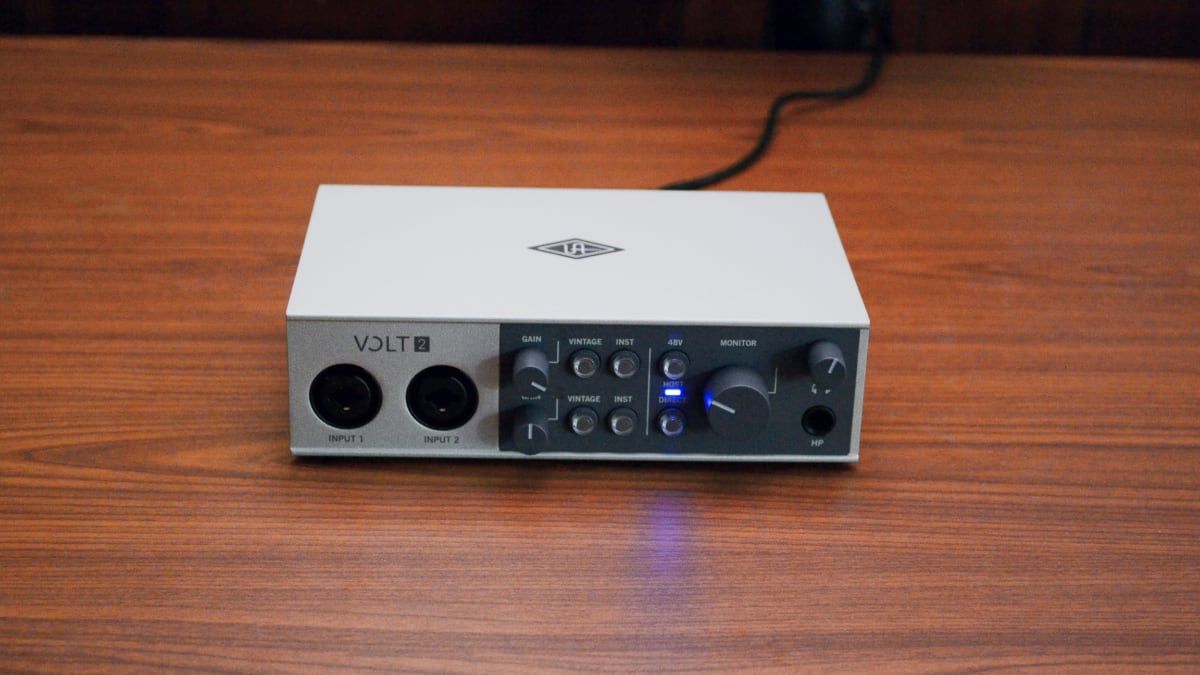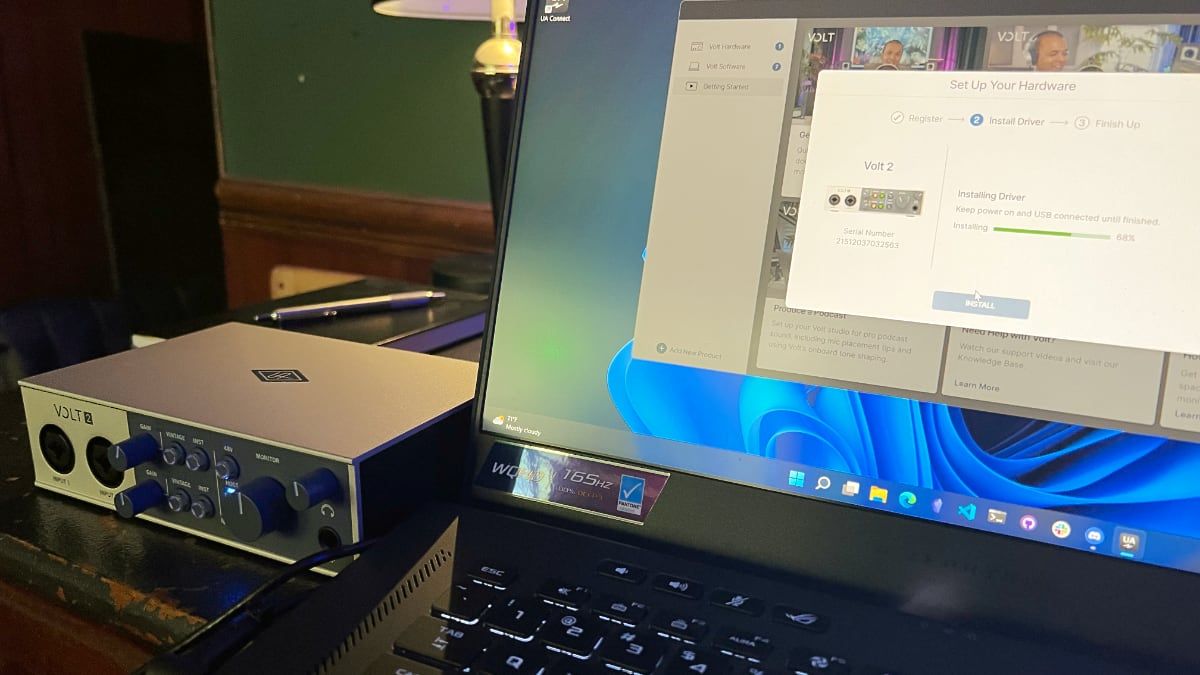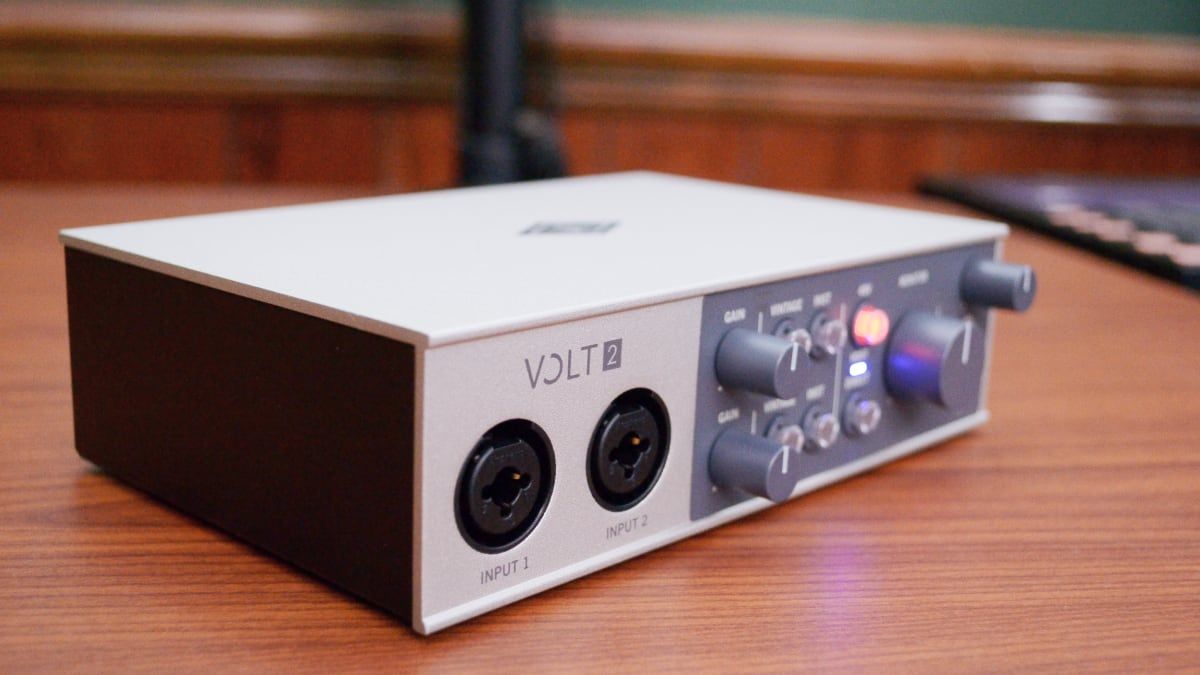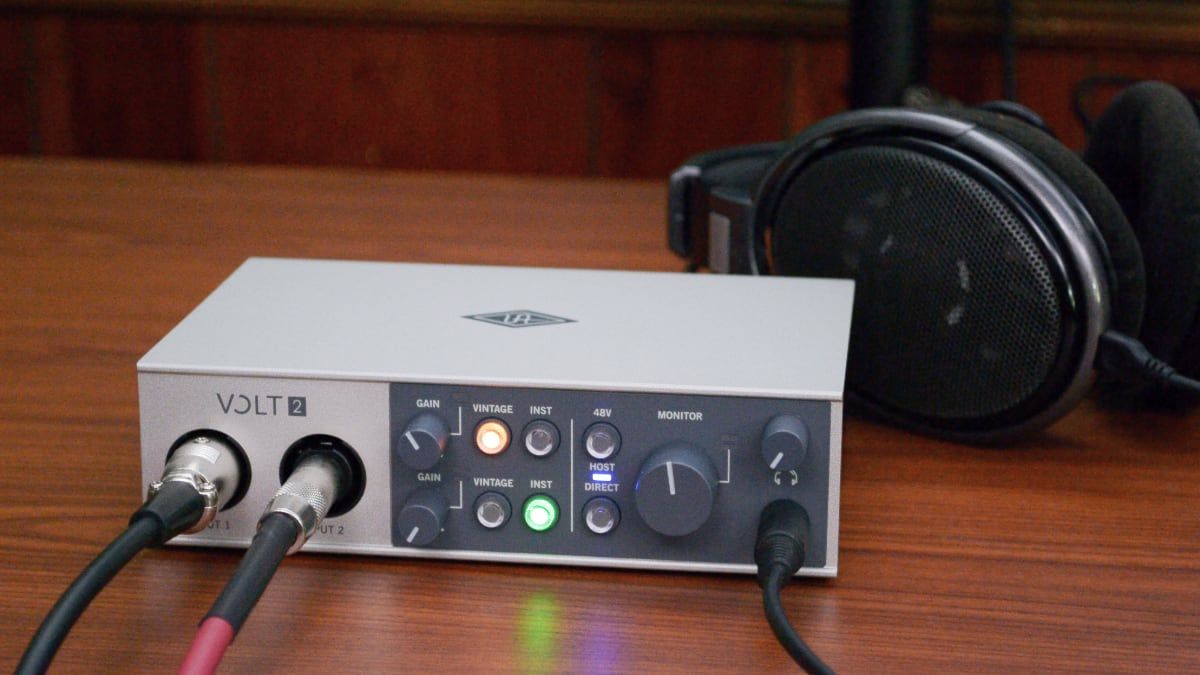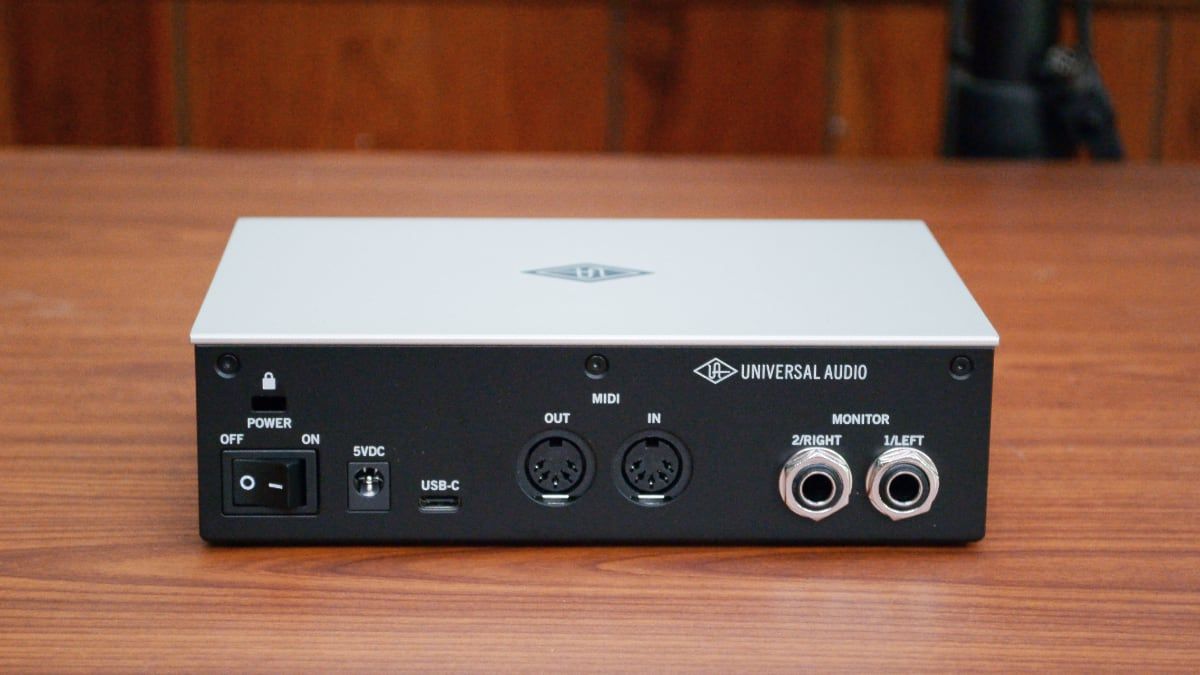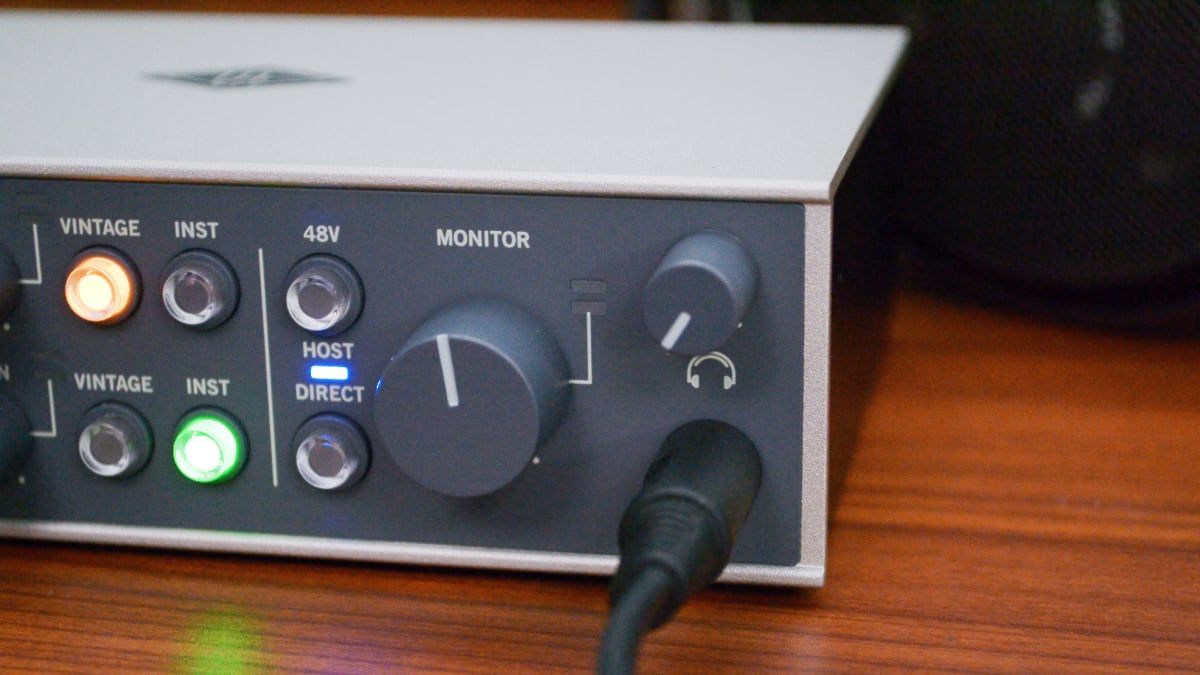Quick Links
Key Takeaways
- The Universal Audio Volt 2 is a versatile audio interface that offers great-sounding audio for content creators, with features like vintage mode and a built-in headphone amp.
- The Volt 2 is user-friendly, with an all-in-one setup app that makes getting started easy. It is also USB bus powered, eliminating the need for a separate power supply.
- While the Volt 2 lacks volume control for direct monitoring and vintage mode may not be suitable for all sources, it is still a reliable and powerful interface for those looking for a portable workhorse.
It seems like nearly everyone is some sort of content creator these days. With videos, podcasts, and live streams, you have one consistent need: great-sounding audio. The Universal Audio Volt 2 aims to be an audio interface for everyone, regardless of what you're creating.
Universal Audio (UA) has been around since the late 1950s and has built quite a reputation in the audio world. That said, the company's audio interfaces haven't been the most affordable. But now, the new Volt line pares back some features that not everyone requires, making for a more streamlined but still feature-rich audio interface.
With two inputs letting you record stereo sound, the Volt 2 looks like a perfect simple interface for most people. Does the Universal Audio name hold its own here, or should the company stick to high-end offerings?
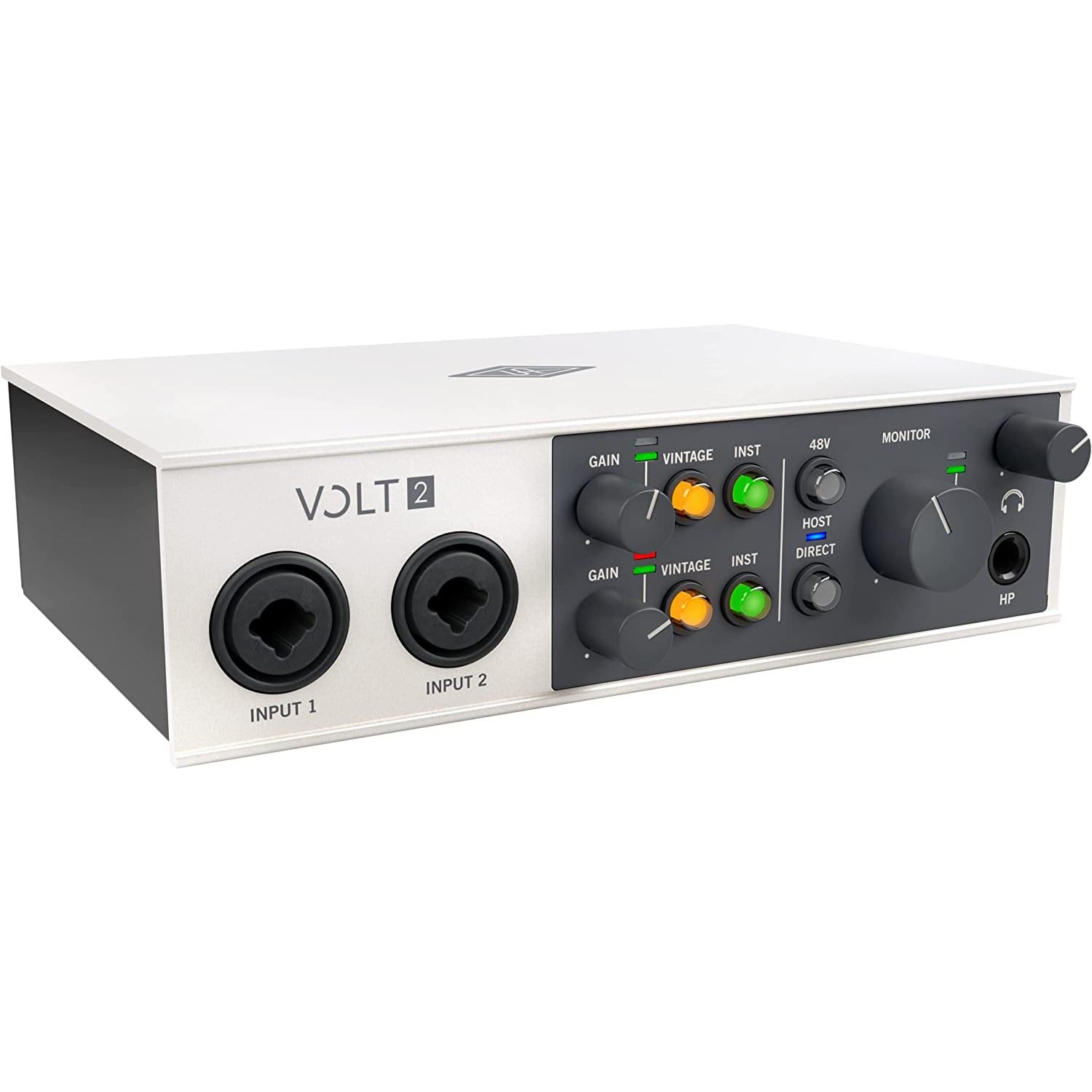

Universal Audio Volt 2
- Power Requirements
- USB bus power, included USB to 5VDC cable
- Bit Depth
- 24-bit
- Sample Rate
- 192kHz
- MIDI
- 1 In / 1 Out
- Monitor Out
- 2 stereo / dual mono 1/4" TRS
- Headphones out
- 1/4" TRS
- Vintage mode adds nice color to dull sources
- Built-in headphone amp has plenty of power
- All-in-one setup app makes getting started easy
- USB bus powered, so no need for a power supply
- USB to 5V DC cable included for use with iPad or iPhone
- No volume control for direct monitoring
- Vintage mode can be overkill for certain sources
Getting Started With the Universal Audio Volt 2
In case you're not familiar, an audio interface like the Universal Audio Volt 2 is basically a more advanced sound card for your computer. In the case of the Volt 2, it lets you use XLR microphones instead of USB models that plug directly into your computer. This offers much more flexibility in addition to opening up the number of microphones available to you significantly.
Universal Audio has set up a handy start page for new Volt series interface owners. This directs you to download the UA Connect app, available for macOS and Windows. Now, just plug in the Volt interface with the included USB-C to USB-A cable. If you've only got USB-C ports, you'll need an adapter or another cable.
The installer registers the interface, installs a driver on your computer, and will even update the firmware if a newer version is available. If you're new to computer audio, it even has some handy tutorials on getting started with your first recordings.
You can also use the Volt 2 with your iPad or iPhone (sorry, Android isn't supported), but if possible, you're better off setting it up on a computer first to update the firmware if an update is available. The Volt 2 is bus powered, so it doesn't need an external power supply, but you'll need to use the included 5VDC cable to power it if you're using an iPhone or iPad.
The Volt 2 is available in a bundle that includes a mic, but if you're just buying the interface, you'll need to supply your own microphone. You'll also need headphones or a set of powered monitors to listen to your recordings.
The Hardware
Pick up the Volt 2 and you immediately notice that Universal Audio didn't skimp on the construction. The interface is built out of solid metal, with a nice silvery-white finish that gives it a look similar to UA's more expensive offerings.
On the front of the device, you get two combination XLR and 1/4-inch TRS inputs. These let you plug in microphones, instruments, or other line-level audio equipment. There are a pair of gain knobs next to these inputs that let you control the level of the incoming signal. Next to them are the controls to enable the instrument input or the Vintage Mode, which we'll look at later.
You also get two volume controls, one for the monitor (speaker) outputs and one for the headphone jack. Next to these are the buttons for direct monitoring, which lets you hear what's coming through the Volt 2 without a computer, and the 48V phantom power button. Phantom power lets you use more sensitive condenser microphones, great for singing and recording instruments.
The back of the device is less packed. Here you'll find the speaker outputs and MIDI in and out jacks. This final detail is somewhat of a surprise, as these are missing on many of Universal Audio's higher-end interfaces.
Recording
Microphones put out a very low-level signal, so audio interfaces use a preamp to raise that signal level before converting it into a digital signal to send into your computer. The quality of these preamps has a lot to do with the quality of your recording.
At this price, most audio interfaces offer similar levels of audio performance, and that is the case here. Testing casual voice recordings with a budget microphone, the Volt 2 delivered a clear, unaffected picture of the signal the microphone was sending.
Usually, that's exactly what you want. In certain cases, however, you might be looking for a little extra sizzle. That's what the Vintage mode here aims to do. Touch the button, and the Volt 2 switches in an analog recreation of Universal Audio's 610 preamp, adding a touch of analog warmth and boosting the high mids slightly.
Vintage mode is similar to features in other interfaces, like the Air mode Focusrite uses in its interfaces. While Vintage mode is great for adding some excitement to a boring-sounding mic, in my experience with other interfaces I've found that you don't necessarily want to use it on every track.
Direct monitoring is an important feature in an interface because any signal going to and from the computer has an element of latency. This means that by the time your signal goes from the analog realm, into the digital, then back into the analog realm via your headphones, there's a significant delay. Direct monitoring lets you hear the interface in your headphones directly.
Interestingly enough, while you can't control the level of the direct monitoring signal, you can choose whether you want the dual inputs to pan hard left and right in your headphones or simply sum to mono. Listening in stereo is handy for stereo recordings, but maybe not as useful as a direct monitoring volume knob would have been.
Playback
Playback is just as important as recording, since what good is a great recording if you can't hear it? Fortunately, Universal Audio packed a powerful headphone amp into the Volt 2, and it was capable of driving my Sennheiser HD650 headphones without issue.
If you'd rather opt for speakers, the simple pair of monitor outputs on the back have you covered. Universal Audio didn't include a line out, balanced or unbalanced, but if you don't need speakers, you can make do with the monitor outputs on the back. Just make sure you're using TRS cables instead of speaker cables.
One interesting feature that Universal Audio has packed into the Volt 2 is the LED output meter. Most smaller interfaces don't indicate output visually, which can make troubleshooting difficult if you can't hear anything out of your headphones. Even though this is a small meter, it's handy to have.
Bundled Software
Included:
- Marshall Plexi Classic Amplifier
- Melodyne Essential
- Ampeg SVT-VR Classic Bass AmpLX480 Essentials
- UJAM Virtual Drummer DEEP
- UJAM Virtual Bassist DANDY
- Spitfire LABS collection
To record anything on your computer, you're going to need some software to record, most likely a digital audio workstation or DAW. Most interfaces aimed at those just getting started include a DAW, and Universal Audio isn't bucking the trend here.
Along with the Volt 2, you get a copy of Ableton Live Lite 11 . This is a limited version of Ableton Live, but it's still quite capable of handling even advanced recording tasks. Universal Audio has also included a suite of audio plugins to help you tweak your sounds.
While the bundle of software isn't as expansive as what you might see in some other packages, it's still substantial. Highlights include Melodyne Essential pitch correction, guitar and bass amp simulators from Softube and Plugin Alliance, and Virtual Drummer DEEP and Virtual Bassist DANDY by UJAM.
This is nice and all, but maybe you can't help but notice that you don't get any of the classic studio gear emulations that Universal Audio bundles with its DSP-equipped audio interfaces. That's true, but you do get a 30-day trial to UAD Spark, a subscription service that includes many of Universal Audio's vaunted plugins.
Should You Buy the Universal Audio Volt 2?
The Universal Audio Volt 2 is an impressive portable audio interface in a world of impressive portable audio interfaces. If you don't have an audio interface, this is a fantastic option as your first interface. That said, if you've got a relatively similar interface from Focusrite, MOTU, or Presonus, you may not be getting much in the way of an upgrade moving to the Volt line.
As a tool, the Volt 2 does everything it needs to. If you've got musical leanings and want to start getting into making music on your laptop, the Ableton-centered software bundle has everything you'll need to get started. For content creators, just add a mic, and you're ready to go.
While it may not boast the same stunning DSP capabilities as higher-end Universal Audio interfaces, the Volt 2 is a great portable workhorse interface.

